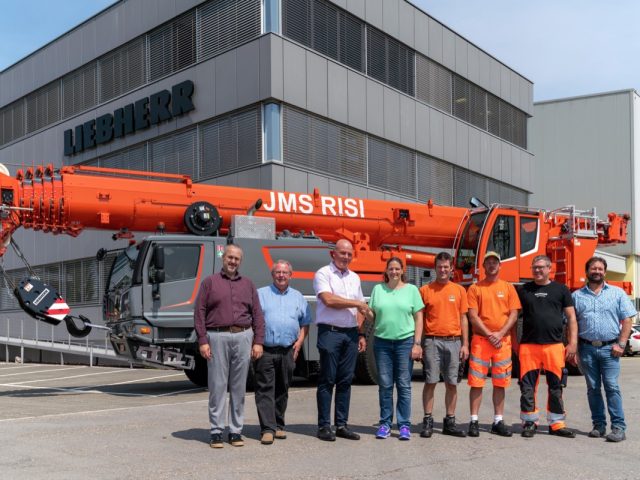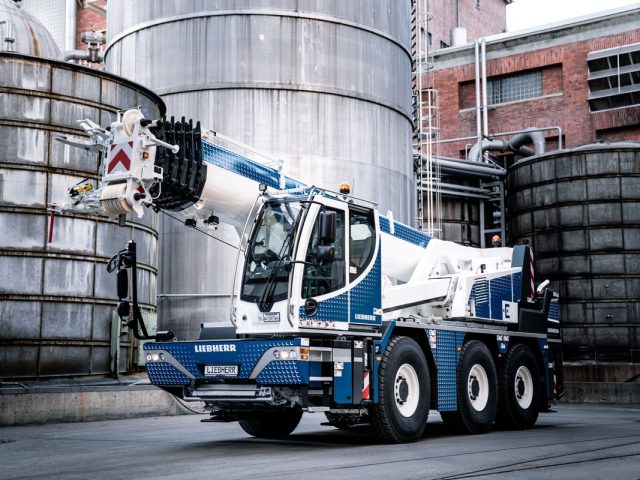- Crane Planner 2.0 is the professional lift planning and visualisation solution for lifting work of all kinds
- The LTM 1650-8.1, LTM 1450-8.1, LTM 1300-6.2, LTM 1250-5.1 and LTM 1230-5.1 cranes are now included in the program
- LR 1250.1 unplugged, LR 1200.1 unplugged and HS 8070.1 are available for planning
- Further crane types and additional functions are added automatically and free of charge for current users following the update
- Easy to use with no special knowledge or hardware required
With the new version of Crane Planner 2.0 Liebherr offers all users, potential users, customers and partners even more benefit – the program now contains several Liebherr mobile cranes, all Liebherr crawler cranes with lifting capacities up to 300 tonnes, as well as hydraulic rope excavators. The software enables the simple but professional planning of a wide variety of crane jobs.

The latest version 1.7 of Liebherr’s lift planning software includes even more features – three-dimensional lift planning can be carried out for further LTM mobile cranes from Ehingen. In addition to the LTM 1750-9.1, which was already included in the program, the LTM 1650-8.1, LTM 1450-8.1, LTM 1300-6.2, LTM 1250-5.1 and LTM 1230-5.1 are now also available for planning work.
Additional telescopic mobile cranes are being added to Crane Planner 2.0 at regular intervals. The LTM 1350-6.1 will be the first of these. Users of the current version will enjoy the benefit of the new crane models and functions automatically and free of charge following the update. This also includes the new distance tool, which enables objects such as machines and buildings to be positioned relative to each other with centimetre precision.
Plan your work, work your plan.
The Liebherr Crane Planner 2.0 helps users to identify solutions and procedures for their lifting work in advance. This enables complicated heavy lifts with crawler cranes as well as supposedly quick and easy taxi lifts by mobile cranes to be completed safely. The tool combines an interactive 3D visualisation of the machines, the loads and surrounding objects with dimensions, a positioning tool and Google Maps, without the need for expensive CAD programs or high-performance computers.

The results of the planning process can be exported in the form of a report and sent to the customer. This means that even small crane contractors can compete for large tenders.
The combination of an attractive, three-dimensional user interface and the exact machine data of the load moment limitation from the LICCON crane control system is unique. The data displayed in Crane Planner 2.0 are determined using exactly the same calculation logic as the live data generated by the real mobile and crawler cranes. Key data such as ground pressures, support pressures, lifting capacities and centres of gravity are calculated simultaneously.
Each time the configuration, load or geometry is changed, a new calculation is carried out.
High performance ‘Free’ version – full ‘Pro’ version with 3D view and additional functions
Challenging planning tasks can be completed professionally in 2D using the ‘Free’ version. The range of functions is similar to the time-tested LICCON work planner. The ‘Pro’ version also contains detailed, interactive 3D models of the cranes, as well as a library with various 3D objects such as buildings, roads, machines or load objects. Map views from Google Maps and 3D data can be included in the display in the correct scale.

Ease of use was the main priority during the development of Crane Planner 2.0. No special expertise is required to use the program and apart from a standard PC, no additional hardware is required.
The program can be downloaded and installed on a PC from the Crane Planner home page. A free licence for the ‘Free’ version or the fee-based ‘Pro’ version can be obtained from the licence shop. Furthermore, there is a ‘Trial’ version available which enables users to enjoy a 30-day free trial of the ‘Pro’ version. Whilst using Crane Planner 2.0, the calculations of the machine planning data, such as lifting capacities, support and ground pressures, are carried out online to ensure that they are always up to date.


















